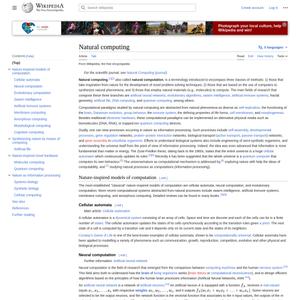We decipher the “genetic code” and think that if we can figure out which gene “causes” something, we can turn traits on and off and go on our merry way. Without a systems view, it is difficult to see unintended consequences coming, to understand the integrative qualities and influences of patterning and context, the dialectic of self and environment.
2 months ago
“Only people who have done an apprenticeship with nature can be trusted with machines.”



Insect swarm intelligence is impressive not because of what it achieves in an absolute sense, but because the building blocks are pre-programmed automatons with little more than simple firmware agency for behaviors like pheromone trail-following.




Innovation is a response to an ecological condition. A hypothesis about an environment. When a design is not in conversation with its environment, it dies. There’s no such thing as advantageous in a general sense. It’s advantageous in the circumstances you’re living in.
So, to survive, you might say a design has to discover an evolutionary path from the familiar to the new, from the present to the future, through a series of steps into the adjacent possible.


According to [Stafford] Beer, biological systems can solve these problems that are beyond our cognitive capacity. They can adapt to unforeseeable fluctuations and changes. The pond survives. Our bodies maintain our temperatures close to constant whatever we eat, whatever we do, in all sorts of physical environments. It seems more than likely that if we were given conscious control over all the parameters that bear on our internal milieu, our cognitive abilities would not prove equal to the task of maintaining our essential variables within bounds and we would quickly die. This, then, is the sense in which Beer thought that ecosystems are smarter than we are—not in their representational cognitive abilities, which one might think are nonexistent, but in their performative ability to solve problems that exceed our cognitive ones. (Pickering, 2010. The Cybernetic Brain)


Something went wrong trying to save https://www.mariacastellanos.net/.



Evolution is the most decentralized thing that you can imagine. It is something that runs itself and is self-organizing at every level and at every scale. (Stewart Brand)

